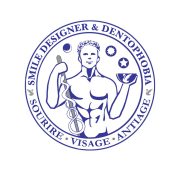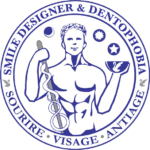LA SÉdation dentaire consciente
diminuez le stress et l'anxiété
notre ENGAGEMENT zéro STRESS zéro douleur :
VOS soins dentaires sous SEDATION CONSCIENTE
LA SÉDATION DENTAIRE CONSCIENTE
diminuer le stress et l'anxiété
Aujourd’hui les nouvelles techniques de sédation permettent de réaliser l’ensemble des soins dentaires, et de parodontologie. Mais aussi la pose des implants dentaires et la réalisation de techniques visant à optimiser l’esthétique du sourire en un minimum de temps, sans stress et sans douleur.
Venant du latin sedare, qui signifie tranquilliser, apaiser, la sédation caractérise la mise en sommeil du système nerveux central à l’aide de médicaments plus ou moins puissants. Il existe ainsi différents niveaux de sédations conscientes, obtenus en fonction du type de médicaments utilisé. Ces niveaux de sédation variant du simple apaisement à la somnolence.
Le principal avantage de la sédation consciente est sa réversibilité et la possibilité d’y recourir autant de fois qu’il le faut. Bien sûr, sans conséquence sur l’organisme.
La sédation consciente atténue la perception de l’environnement. Elle diminue le stress et l’anxiété. Elle n’a pas d’effet sur les patients très angoissés ou phobiques. Le patient respire normalement et conserve son réflexe de déglutition.
Contrairement à l’anesthésie générale, la sédation consciente ne dispense pas le chirurgien-dentiste d’effectuer une anesthésie locale de la zone à traiter. La sédation consciente est une relaxation en préparation de l’anesthésie locale et de l’intervention proprement dite.
En fonction de la demande de confort du patient et du type d’acte à effectuer, plus ou moins invasif, les techniques de sédation conscientes placent la personne dans un état oscillant de la simple relaxation au sommeil léger. De cette manière, la séance de soins se déroule dans les meilleures conditions possibles.
Le choix d’une sédation consciente repose toujours sur un échange entre le patient et le praticien. Ce dernier, au regard des attentes du patient et de son état de santé, décidera du meilleur type de sédation et du plan de traitement optimal, intégrant tous les facteurs psychologiques, médicaux et les contraintes temporelles et/ou professionnelles de son patient, et s’inscrira dans le respect de la législation des pays où les soins sont dispensés.
CHOIX DE LA Sédation dentaire CONSCIENTE
LA SÉDATION PAR INHALATION PONCTUELLE
Le gaz MEOPA ou le protoxyde d'azote
Si vous-même, votre enfant ou une personne âgée, présentez une crainte modérée des soins dentaires ou une anxiété diffuse à l’idée d’une petite chirurgie, ou si vous avez peur des piqûres (achmophobie) ou des prises de sang (hémophobie), l’inhalation de gaz appelé MEOPA (Mélange Equimolaire d’Oxygène et de Protoxyde d’Azote) représente une solution intéressante.
Ce gaz est aussi disponible sous d’autres noms commerciaux, comme KALINOX ® ou ENTONOX ®.
Son effet est similaire à celui du comprimé relaxant, mais son mode d’action est différent, puisqu’il est immédiat, contrairement au comprimé, qui n’agit que longtemps après sa prise.
Ce deuxième niveau de sédation dentaire consciente induit en effet une légère narcose par inhalation d’un gaz euphorisant (l’autre nom du gaz MEOPA est d’ailleurs le gaz hilarant).
Le gaz MEOPA permet d’obtenir trois effets :
un effet anxiolytique (l’anxiété est réduite)
un effet antalgique (il augmente le seuil de perception de la douleur)
un léger effet amnésiant (il génère un état de conscience modifié, tout en laissant au patient la possibilité d’interagir avec le chirurgien-dentiste et de répondre à des ordres simples)
Le patient reste conscient, même si sa notion du temps qui passe est légèrement émoussée. L’inhalation produit un apaisement propice au bon déroulement des soins. Par ailleurs, l’effet hallucinogène du gaz MEOPA induit une légère analgésie par un effet de narcose à l’azote.
Pour l’adulte, l’enfant anxieux, le patient âgé, les personnes fragiles.
L’inhalation de gaz MEOPA, composé à 50% de protoxyde d’azote et à 50% d’oxygène est une solution utilisée couramment par un nombre croissant de médecins dentistes depuis la fin des années 1990. L’autorisation de mise sur le marché de ce gaz, ainsi dilué, permet de protéger le cerveau et de garantir la totale innocuité de ce médicament.
Le recours au gaz MEOPA peut aider les personnes ressentant une appréhension à faciliter le déroulement des soins dentaires. Il en va de même pour les enfants qui manifestent une peur modérée du dentiste ou qui ne sont pas habitués à certains types de soins dentaires, pour les personnes handicapées mentales ou les personnes âgées avec troubles cognitifs.
Toutefois, dans le cas de phobie avérée du dentiste, l’inhalation du gaz MEOPA ne suffira pas.
En effet, le gaz MEOPA est difficilement adaptable pendant l’intervention et le contrôle des effets est relativement aléatoire d’un patient à l’autre. Par ailleurs, sachez que les effets sont relativement courts dans le temps. Il faut donc que l’acte le soit également. Ce protocole n’est donc pas adapté aux longues séances de soins, qui seront vécues de façon très pénible pour les phobiques véritables.
Il appartient à votre médecin dentiste de vous exposer tous les modes de sédation pouvant être mis à votre disposition avant la mise en œuvre de votre plan de traitement. Ainsi éclairé, vous pourrez choisir ensemble, une sédation consciente, une sédation semi-inconsciente ou une sédation dentaire inconsciente, en fonction de la nature de l’acte à réaliser, votre état de santé et votre niveau d’anxiété.
Enfin, dans la pratique, le recours au gaz MEOPA est rarement contre-indiqué.
L’inhalation diffuse dans les poumons puis dans le sang et gagne le cerveau entrainant un effet apaisant et euphorisant.A mesure que vous respirez ce gaz, vous perdez plus ou mois conscience des soins que vous subissez. Vous pouvez également somnoler, mais ne sombrerez pas dans un sommeil profond.
Si vous devez subir un soin en respirant du gaz MEOPA, votre médecin dentiste devra pratiquer une anesthésie locale. Le gaz MEOPA n’enlève pas la douleur. Par contre, il va vous aider à supporter la piqûre de cette anesthésie locale.
Au-delà de la réduction de l’anxiété générée par les soins dentaires, l’intérêt du recours au MEOPA réside dans le fait que ce mode de sédation consciente peut être répété fréquemment. Votre anxiété étant réduite, vous pouvez alors initier une séance de soins dentaires à laquelle vous aviez du renoncer, faute de trouver un accompagnement médicamenteux adapté.
Allongé sur le fauteuil dentaire, le patient est pris en charge. On lui pose un masque sur le visage. Un mélange gazeux contenant de l’oxygène arrive dans le masque via un tuyau raccordé à la bouteille de gaz comprimé.
Le patient respire le mélange gazeux qui va le faire rire et le décontracter. La respiration de MEOPA constitue une première étape pour supporter la piqûre de l’anesthésie locale. Elle peut suffire uniquement pour un geste simple et rapide.
Si vous devez respirer plus de gaz pour que le chirurgien dentiste puisse réaliser le soin dans les meilleures conditions, vous pourrez le faire sans difficulté ni danger pour votre santé. Vous devrez simplement être accompagné pour regagner votre domicile et ne pas conduire le jour de la sédation.
Pour preuve de la sécurité de la technique : Sachez que les agences de santés impose aux médecins dentistes proposant cette sédation consciente dans leurs cabinets la nécessité de se former. Cette sédation sera proposée dans des lieux se prêtant à cette technique, c’est-à-dire “dans des locaux adaptés, par un personnel médical ou paramédical spécifiquement formé, et dont les connaissances sont périodiquement réévaluées”.
Un cahier des charges précis, délimite donc clairement le périmètre des formations à l’utilisation du gaz au protoxyde d’azote en cabinet.
Vous serez donc dans les mains d’un professionnel rompu aux meilleures techniques de sédation consciente. Par ailleurs, durant le soin, vous serez en permanence surveillé(e) au moyen d’un oxymètre. Votre chirurgien-dentiste contrôlera ainsi constamment la teneur en oxygène de votre sang circulant et votre fréquence cardiaque (pouls).
Sachez que le recours au gaz MEOPA n’est pas remboursé par les assurances. Seuls les soins réalisés par votre médecin dentiste le seront peut-être. Le recours à ce mode de sédation consciente. Peut, peut-être, être pris en charge par votre mutuelle privée. Renseignez-vous auprès d’elle.
Du fait de sa faible durée d’action, l’inhalation du gaz MEOPA est réservée pour des soins courts et non invasifs.
Il est également très utile pour les achmophobiques au moment de la piqûre buccale d’anesthésie ou en cas de pose d’un cathéter. En effet, l’usage du MEOPA fait gonfler les veines et facilite donc la phlébotomie.
En revanche, son action en per opératoire est très faible et est totalement sans effet pour les patients souffrants de dentophobie.
Enfin, l’usage du MEOPA peut s’avérer compliqué à mettre en œuvre pendant les soins car le patient doit souffler une partie du MEOPA sans que le dentiste ne le respire.
Le comprimé relaxant de benzodiazepine
Le comprimé relaxant représente le premier niveau de sédation. Il provoque un apaisement léger, la veille et le jour de l’intervention. Il peut être réalisé par tous les médecins dentistes.
Le comprimé relaxant permet de juguler la montée de stress préopératoire, qui va nécessairement monter à mesure que l’intervention se rapproche.
N’importe quel patient ressent une inquiétude avant une intervention, même mineure. Cette méthode de sédation peut ainsi être administrée à tout patient, quelle que soit la nature de l’acte envisagé. La sédation consciente par comprimé relaxant vous offre la possibilité de diminuer votre niveau de conscience, de manière à pouvoir vous administrer les soins dentaires dont vous avez besoin, sans stress, et dans les meilleures conditions. Cela étant, vous ne dormez pas, et restez conscient durant tout l’acte.
L’effet est essentiellement une certaine déconnexion temporelle. Vous voyez moins le temps passer pour des séances longues. Mais en aucun cas ce type de sédation est indiquée pour des stomatophobiques qui désirent une déconnexion totale.
La prise de comprimé relaxant est aussi très intéressante dans le cadre d’une chirurgie orale car elle agit comme une analgésie supplémentaire.
Cela étant, si vous présentez une réelle phobie du dentiste, la sédation par comprimé relaxant n’est pas le mode de sédation dentaire qui vous convient. Il faudra dans ce cas échanger avec votre chirurgien dentiste sur la possibilité de bénéficier d’une sédation dentaire semi-inconsciente, voire une sédation inconsciente.
S’il ne vous fait pas dormir, le comprimé relaxant vous plonge dans un état de détente tel que vos peurs et votre anxiété diminuent considérablement, rendant ainsi possibles des soins courants, dont la durée varie de quelques minutes à moins de deux heures.
Cela étant, sachez que le comprimé relaxant n’agit pas de manière égale chez tout le monde. Un patient réellement angoissé peut ne pas en ressentir les effets. Ces derniers peuvent également être minorés chez un patient angoissé de manière générale, et qui a coutume de consommer ce type de médicament plus ou moins régulièrement.
Si tel est votre cas, il conviendra donc, avant la réalisation de l’acte, que vous évoquiez ouvertement avec votre médecin dentiste tous vos traitements en cours, notamment si vous consommez déjà des anxiolytiques ou des drogues réputées illégales (canabis, cocaïne, héroïne..). Le praticien choisira ainsi le meilleur médicament et la posologie la plus adaptée pour vous.
Lors du premier rendez-vous, votre médecin dentiste vous demandera de répondre à un questionnaire pour mieux connaître vos besoins et votre état de santé général. Il pourra alors mettre en lumière une éventuelle phobie ou une anxiété diffuse à l’évocation des soins dentaires. Ce questionnaire a pour but, à la fois de faire connaissance, mais aussi de ne pas passer à côté d’une peur du dentiste qu’un soin réalisé sans prise en charge spécifique ne pourrait qu’exacerber.
A cette occasion, le médecin dentiste vous demande, sur une échelle de 1 à 20, d’évaluer votre niveau d’angoisse à la simple évocation de devoir subir des soins dentaires. A partir de 10/20, on considère qu’il y a nécessité de mettre en place une sédation. Au-delà de son côté informatif, ce questionnaire sera l’occasion de créer un lien avec votre médecin dentiste, d’être écouté(e) et de créer un climat de confiance, préalable indispensable pour que les soins se déroulent pour le mieux.
L’objectif de la prise du comprimé relaxant est d’obtenir un état de détente maximal, de manière à optimiser le confort physique et psychique du patient, permettant la réalisation normale des soins dentaires.
De manière générale, les anxiolytiques les plus prisés par les chirurgiens-dentistes appartiennent à la famille des Benzodiazépines, et en particulier les Benzodiazépines à longue demi-vie, c’est-à-dire dont les effets peuvent se prolonger dans l’organisme. Connus pour réduire l’anxiété, les spasmes musculaires, l’insomnie et les crises d’angoisse, leurs effets ont une durée variable dans le temps. Ils seront donc choisis en fonction de l’acte chirurgical prévu.
Ainsi, une fois la décision chirurgicale prise, votre chirurgien-dentiste vous prescrira un ou plusieurs comprimés par jour la veille ou plusieurs jours avant la date opératoire.
Dans le cadre de l’entretien préalable que vous aurez avec votre médecin dentiste, il importera que vous mentionniez tout problème de santé ayant une incidence sur la prescription de Benzodiazépines, comme l’allergie à l’un des composants, l’insuffisance respiratoire sévère, le syndrome de l’apnée du sommeil, l’insuffisance hépatique, une myasthénie, l’alcoolisme, le tabagisme ou l’addiction à toutes formes de drogues.
La prise d’un comprimé relaxant permet, dans l’absolu, la réalisation de nombreux actes dentaires, qu’il s’agisse de soins dentaires, de chirurgie orale, de parodontologie, de pose de prothèse dentaire, ou d’implants.
Par ailleurs, la prise de comprimé relaxant permet de répéter fréquemment ce type de sédation, ce qui est particulièrement intéressant pour les patients qui sont en rupture de traitement par peur du dentiste.
En revanche, ce type de sédation est totalement inopérant pour des patients souffrant de stomatophobie avérée.
Le comprimé relaxant, une sédation légère
VOUS ÊTES UNIQUE !
CAS CLINIQUES RECONSTRUCTION DU SOURIRE SOUS SÉDATION DENTAIRE CONSCIENTE



